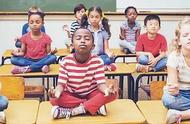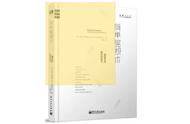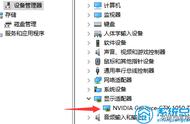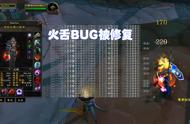如果家中有一个调皮的“神兽”,家中老小往往会借助智能设备打发时间,然而,智能设备过度使用又使孩子出现更多心理问题,面对这份无名的烦恼,请您不必担心,因为并不是你一个人经历着这些心理不适。那么有什么好的家庭活动值得一家老小齐上阵,创建和谐的家庭氛围呢?

(图片来自网络)
正念(mindfulness)是非常值得推荐的活动。正念是指“通过有意地、非判断地注意当下而升起的觉知” ,可通俗地理解为对当下身心感受的觉知。目前较有影响力的系统化正念训练包括正念减压疗法(MBSR)和正念认知疗法(MBCT)。这些训练可使个体对不愉悦感受的容纳能力有所提升,并拥有更强的自我行为的监控与调解能力,即元认知。最新的科学研究表明,通过正念训练可以从多个方面改善成人和孩子在新冠肺炎疫情中的心理不适。
成人通过参加为期13天,每天1.5小时的正念训练,其感知到的与疫情相关心理困扰,躯体症状,抑郁症状和焦虑症状都得到非常显著的改善。同时,短期正念训练也能显著改善新冠疫情相关的失眠问题,使成人处于最佳睡眠状态。另一方面,针对青少年的纵向追踪研究表明,青少年通过正念训练,其心理弹性(resilience)与情绪智力得到显著提升,从而能更好面对疫情带来的负面情绪压力。另外,通过参加线上正念课程还能使青少年在睡眠、情绪调节、执行功能等方面有所提升,从而缓冲的新冠疫情带来的负面健康影响。因此,正念训练适合于缓解一家老小的疫情相关心理不适。
更有意思的是,正念训练能提升家长与孩子的关系,帮助家长更好地面对疫情在家的“神兽”。具体来说,正念训练使家长得到了更好的睡眠质量和心理能量,从而表现出更好的心理灵活性(flexibility)。这种心理灵活性让家长能更从容地应对辅导家中娃娃的挑战。另一方面,正念训练使家长的焦虑程度降低,从而更有耐心地参与辅导孩子的功课。这种参与性增强能大大提升孩子的学习效率,促进亲子互动。也就是说,正念训练通过提升家长的心理能量、降低焦虑,帮助他们以更灵活与耐心的方式参与孩子的学习活动,从而提升亲子关系以及孩子学习效果。
了解了正念训练带来的这么多好处,那么应该如何开始,有哪些注意事项呢?最常见的正念练习形式有正念呼吸、身体扫描、正念伸展等,可以跟随专业正念练习指导音频进行练习(请见参考文献)。如果想进一步深入,大家可以搜索相关专业书籍。需要注意的是,以上正念训练适合于绝大多数人,但正在遭受创伤或患有严重心理障碍的患者并不建议自行练习,应该寻求专业门诊治疗。另外,正念练习是让大家对此时此刻自己身体与情绪的觉察与接纳,包含多种训练形式。比如,深受我国老年人喜欢的太极拳被学界认定为一种有效的正念训练。打太极在提高练习者对自己身体觉知的同时,还能提高练习者的运动感知能力 。瑜伽也是较为常见的正念训练,其对练习者的自主神经系统(autonomic nervous system)有较大益处,能降低静息心率,增加心率变异性,提高心脏功能。正念舞蹈作为第二代正念训练方案(SG-MBI),不仅能提高练习者对自己身心状态的感知,而且还能提高练习者与身处同一空间内不同个体的交流,如群体同步。因此,大家完全可以根据自身兴趣及需求选择适合的方案。接下来,就请大家带着孩子一起感受正念带来的安宁与愉悦吧!

(图片来自网络)
参考文献:
1. 蒋春雷, 吴冉. (2018). 短时冥想训练引导语 JW2016. 国家版权局 (国作登字 -2018-A-00598100)
2. Bernstein, A., Hadash, Y., Lichtash, Y., Tanay, G., Shepherd, K., & Fresco, D. M. (2015). Decentering and related constructs a critical review and metacognitive processes model. Perspect Psychol Sci, 10(5), 599-617.
3. Bharshankar, J. R., Bharshankar, R. N., Deshpande, V. N., Kaore, S. B., & Gosavi, G. B. (2003). Effect of yoga on cardiovascular system in subjects above 40 years. Indian Journal of Physiology and Pharmacology, 47, 202–206.
4. Bräuninger, I. (2014). Specific dance movement therapy interventions— Which are successful? An intervention and correlation study. The Arts in Psychotherapy, 41(5), 445–457.
5. Büssing, A., Michalsen, A., Khalsa, S. B. S., Telles, S., & Sherman, K. J. (2012). Effects of yoga on mental and physical health: a short summary of reviews. Evidence-Based Complementary and Alternative Medicine, 2012, 1–7.
6. Chen, I. H., Chen, C. Y., Pakpour, A. H., Griffiths, M. D., & Lin, C. Y. (2020). Internet-Related Behaviors and Psychological Distress Among Schoolchildren During COVID-19 School Suspension. Journal of the American Academy of Child and Adolescent Psychiatry, 59(10), 1099–1102.e1.
7. Frank, J. L. , Kohler, K. , Peal, A. , & Bose, B. . (2017). Effectiveness of a school-based yoga program on adolescent mental health and school performance: findings from a randomized controlled trial. Mindfulness, 8(3), 544-553.
8. Gyllensten, A. L., Hui-Chan, C. W. Y., & Tsang, W. W. N. (2010). Stability limits, single-leg jump, and body awareness in older Tai Chi practitioners. Archives of Physical Medicine and Rehabilitation, 91(2), 215–220.
9. Jacobson, B. H., Chen, H., Cashel, C., & Guerrero, L. (1997). The effect of T’ai Chi Chuan training on balance, kinaesthetic sense, and strength.Perceptual and Motor Skills, 84(1), 27–33.
10. Kabat-Zinn, J. . (2003). Mindfulness-based interventions in context: past, present, and future. clinical psychology: science & practice, 10, 144-156.
11. Lam, C. B., Lam, C. S., & Chung, K. K. H. (2022). Linking maternal involvement in child online learning to child adjustment during the COVID-19 pandemic: The moderating role of maternal mindfulness. Journal of Social and Personal Relationships.
12. Miller RL, Moran M, Shomaker LB, Seiter N, Sanchez N, Verros M, Rayburn S, Johnson S, Lucas-Thompson R. Health effects of COVID-19 for vulnerable adolescents in a randomized controlled trial. Sch Psychol. 2021 Sep;36(5):293-302.
13. Nedeljkovic, M. , Wirtz, P. H. , & Ausfeld-Hafter, B. . (2012). Effects of taiji practice on mindfulness and self-compassion in healthy participants—a randomized controlled trial. Mindfulness, 3(3), 200-208.
14. Peltz, J. S., Daks, J. S., & Rogge, R. D. (2020). Mediators of the association between COVID-19-related stressors and parents' psychological flexibility and inflexibility: The roles of perceived sleep quality and energy. Journal of contextual behavioral science, 17, 168–176.
15. Pizarro, J. J. , Basabe, N. , Amutio, A. , Telletxea, S. , Harizmendi, M. , & Gordon, W. V. . (2020). The mediating role of shared flow and perceived emotional synchrony on compassion for others in a mindful-dancing program. Mindfulness, 11(1), 125-139.
16. Segal, Z. V., Williams, J. M. G., Teasdale, J. D. (2002). Mindfulness based cognitive therapy for depression: A new approach to preventing relapse. New York: Guilford Press
17. Smit, B., & Stavrulaki, E. (2021). The Efficacy of a Mindfulness-Based Intervention for College Students Under Extremely Stressful Conditions. Mindfulness, 1–15.
18. Yuan, Y. . (2021). Mindfulness training on the resilience of adolescents under the covid-19 epidemic: a latent growth curve analysis. Personality and Individual Differences, 172, 110560.
19. Zhang, H., Zhang, A., Liu, C., Xiao, J., & Wang, K. (2021). A Brief Online Mindfulness-Based Group Intervention for Psychological Distress Among Chinese Residents During COVID-19: a Pilot Randomized Controlled Trial. Mindfulness, 12(6), 1502–1512.
来源:中国科学院脑科学与智能技术卓越创新中心
,











